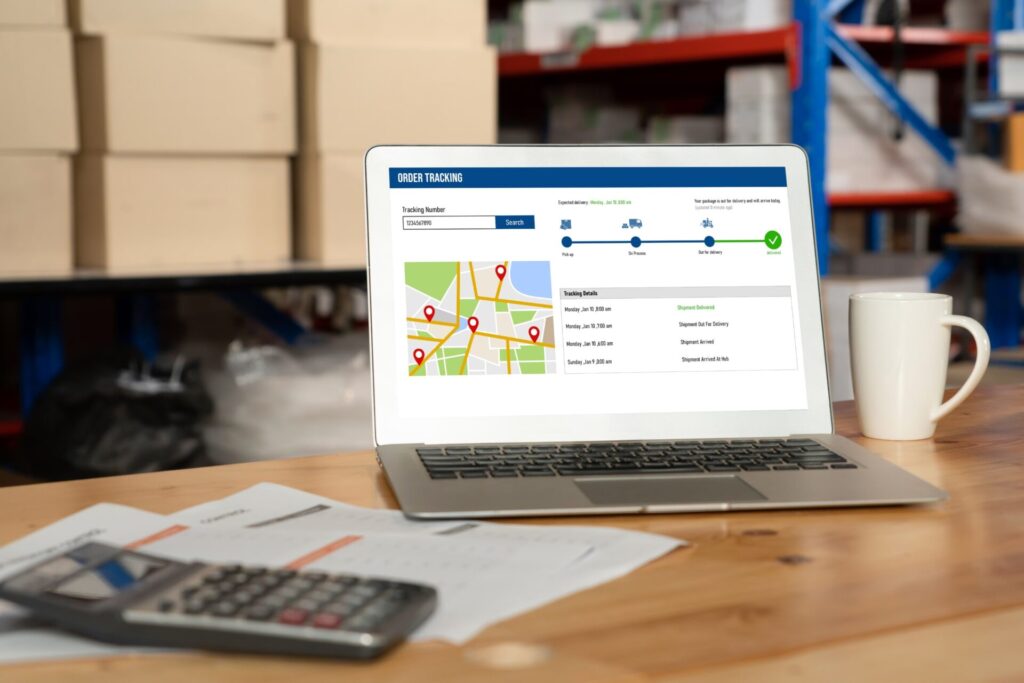
Customizing LTL Freight Solutions for Your Needs
The days of treating Less Than Truckload (LTL) as a one-size-fits-all proposition are behind us. In an era of tight delivery windows and heightened customer expectations, businesses need LTL solutions tailored to their shipping profiles—whether that means factoring in specialized commodities, leveraging multi-stop routes, or working with carriers who excel in certain lanes.
This guide explores the art and science of customizing LTL freight solutions to better align with your operational flow, cost targets, and customer service objectives. We’ll discuss everything from analyzing your freight patterns and building stronger carrier relationships to utilizing advanced technology for route optimization. If you’re a logistics manager or business owner seeking to reduce overhead while fulfilling complex shipping demands, read on.
Introduction
Why Tailoring LTL Solutions Matters
Choosing an off-the-shelf LTL solution might suffice for sporadic or standardized shipping, but many companies have unique constraints. Some must handle sensitive products that can’t be repeatedly offloaded during cross-docks, while others face significant seasonal volume swings. In these scenarios, a custom LTL setup can significantly cut transit times, reduce risk of damage, and contain costs.
Navigating an Evolving Freight Landscape
Rising e-commerce orders, shorter lead times, and driver shortages create dynamic conditions. A rigid or generic LTL approach might result in frequent reweigh fees, missed pickups, or inadequate coverage. By customizing your LTL solution, you introduce flexibility—from specialized carriers who cover exact lanes to alliances with 3PLs that unify your shipments across multiple providers.
Understanding Your Unique Shipping Profile
Analyzing Volumes and Frequencies
Before customizing LTL:
- Assess your average pallet count, weight, and dimensions per shipment.
- Identify lanes you frequently use.
- Map out your peak shipping months or seasonal spikes.
Carriers appreciate stable lanes and predictable volumes, making it easier to collaborate on a strategy that streamlines pickups and drop-offs.
Identifying Special Handling or Transit Requirements
Goods requiring temperature control or hazmat compliance can’t be lumped in with standard LTL. Tailored solutions ensure you get carriers experienced in your commodity’s handling, plus the right insurance coverage. Also, if your customers demand rapid or specialized deliveries, you can explore partial truckload or dedicated lanes for high-priority shipments.
Core Benefits of Tailored LTL Arrangements
Enhanced Efficiency and Cost Control
A customized LTL strategy helps you consolidate shipments, match carriers to lanes, and reduce cross-docking. You ultimately pay for fewer touches, lower damage rates, and more direct routing— all culminating in lower cost per pound or per pallet over time.
Reduced Damage, Less Rehandling
When carriers and 3PLs truly grasp your freight’s nature, they can minimize re-handling or avoid precarious stacking. Fewer cross-dock transfers directly correlate to decreased claims and improved on-time performance, boosting your reputation for reliability.

Collaborating with Carriers and 3PLs
Transparent Communication for Optimal Results
Carriers and 3PLs can’t tailor solutions if they lack insight into your shipping patterns. Share details like:
- Forecasted volumes in each lane.
- Packaging standards and handling requirements.
- Delivery deadlines your customers expect.
This data fosters mutual trust, so the carriers can staff up or schedule equipment accordingly.
The Role of Specialized Freight Brokers
Freight brokers or third-party logistics providers often access extensive carrier networks. They leverage multiple relationships and volume discounts to negotiate better rates or faster lanes. If you lack internal resources for carrier vetting, a specialized broker might expedite the process of building your custom LTL plan.
Customizing Lanes and Routes
Strategic Distribution Hubs and Pool Points
For multi-location shipments, pool distribution—where cargo merges at a centralized location, then branches out for final deliveries—can slash transit times and cross-dock handling. By establishing consistent pool points near major customer clusters, you streamline shipments into partial or consolidated loads, saving on per-pallet rates.
Leveraging Regional vs. National Networks
- Regional Carriers: Shorter lanes, local presence, and potentially quicker transit for shipments within a specific area.
- National Carriers: Wide coverage across states, beneficial for shippers with broader footprints. Possibly more standard procedures and advanced tracking tools.
Selecting the right combination or “blended network” often produces balanced coverage and cost.
Packaging and Labeling for Tailored LTL
Adapting Packaging Based on Commodity and Route
Fragile items bound for multi-touch routes (with multiple cross-docks) need robust crating, foam inserts, or corner protectors. Meanwhile, shipments traveling shorter, more direct lanes might skip excessive protective layers. This “right packaging for the route” approach optimizes both cost (by avoiding overweight packaging) and safety.
Incorporating Technology in Labeling and Tracking
Embedding barcodes, RFID tags, or QR codes can accelerate scanning at cross-docks. Carriers can instantly identify your shipment’s next destination, reducing confusion or misloading. Synchronized labeling across BOLs, packing lists, and container markings fosters near-error-free shipping flows.
Leveraging Technology and Data Analytics
TMS Integration for Real-Time Visibility
A Transportation Management System (TMS) centralizes:
- Shipment Bookings across carriers.
- Rate Comparisons for each lane.
- Tracking and ETAs in a single dashboard.
For tailored LTL, a TMS eliminates guesswork, letting you easily combine smaller loads, schedule pickups, or spot service interruptions early.
Using Historical Data for Continuous Improvement
Beyond daily tracking, aggregated data reveals performance patterns—like which carriers excel on certain routes or how often loads get delayed. By analyzing your historical shipments (cost per route, claims ratio, on-time delivery), you can refine your strategy, dropping underperforming carriers or shifting volumes to better lanes.

Multi-Stop and Partial Truckload Synergy
When to Shift from LTL to PTL
Sometimes, your partial shipments become large or frequent enough that a partial truckload (PTL) arrangement is more efficient. PTL might handle 6–12 pallets (5,000–20,000 lbs.) on a single route, cutting cross-dock interactions. This can be a game-changer for time-sensitive or delicate freight.
Consolidating Shipments to Streamline Transit
Where feasible, grouping multiple orders into a single larger load reduces per-pallet costs and points of handling. If you have consistent shipments to the same region every Tuesday, for instance, bundling them might expedite overall transit and cut charges. Carriers appreciate the higher payload, so they often extend better rates.
Creating Flexible Service Agreements
Negotiating Contracts That Evolve with Business Needs
Instead of locking into rigid, year-long deals, some shippers prefer rolling contracts or minimum volume commitments that carriers can revisit quarterly. This keeps your LTL solution fluid, adapting to seasonal or market changes without frequent renegotiations from scratch.
Balancing Fixed Lanes and Spot Quotes
For stable routes, a contracted or volume-based rate typically works best, bringing cost predictability. But for random or less frequent lanes, a spot quote approach—shopping carriers individually—can be cheaper or more flexible in the short term.
Case Study: A Manufacturer’s Journey to Customized LTL
Overcoming Seasonal Spikes with Tailored Routing
A Midwest auto-parts manufacturer struggled each spring and fall with sudden spikes in pallet shipments. By working with multiple regional carriers who specialized in their busiest corridors, they developed a scheduling framework that:
- Pre-booked capacity during known peak weeks.
- Used pool distribution centers near major clients to avoid congested cross-docks.
The result: 15% faster deliveries compared to prior years with fewer damage complaints.
Achieving 15% Faster Deliveries
Through consistent carrier communication and strategic TMS integration, the manufacturer monitored shipments in real-time, swiftly adjusting routes if a terminal backlog occurred. The company not only slashed average transit times by 15%, but it also improved on-time-in-full (OTIF) metrics, boosting customer loyalty.
Tracking Performance and Revisiting Strategies
KPIs for Customized LTL Shipping
Key performance indicators for analyzing your tailored LTL approach:
- On-Time Delivery Ratio
- Claims Frequency and Costs
- Cost per Hundredweight (CWT)
- Lead Time from Order to Delivery
A monthly or quarterly performance review can spotlight improvement areas or reveal new capacity constraints.
Adapting to Market Shifts and Carrier Capacity
Economic slowdowns, driver shortages, or emerging e-commerce trends can rapidly shift capacity and pricing. Keep lines open with your carriers—especially if you foresee major surges or a route change. By refining your custom LTL strategy proactively, you stay agile in a volatile marketplace.
Conclusion
Customizing LTL freight solutions is about more than just quoting rates. It requires mapping your shipping patterns, forging collaborative relationships with carriers or brokers, and leveraging technology to unify everything from labeling to real-time tracking. When done right, you’ll enjoy consistent and competitively priced partial-load deliveries, minimal damage incidents, and the freedom to adapt as your business evolves.
So start by defining your unique shipping needs—considering factors like volume, product nature, lanes, and growth plans. Then, engage carriers or 3PLs in open discussions, implement a robust TMS, and keep refining the partnership with routine performance checks. By building a truly tailored LTL setup, you unlock a more efficient, reliable supply chain that underpins your business goals.
How useful was this post?
Click on a star to rate it!
Average rating 0 / 5. Vote count: 0
No votes so far! Be the first to rate this post.



